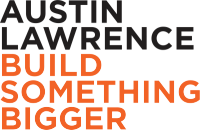Your waterfall will look more robust after reading and acting on this post.
It’s a shame when I come across websites that are obviously the result of a lot of effort in developing content for lead generation, and then quickly realize that their results are going to be lackluster at best.
After reviewing hundreds of sites, it's become clear that even when the design is clean and they have strong calls to action, they’re missing one or more of these six reasons they're not generating leads that results in sales.
How can I tell?
Because I can see that their content strategy isn’t completely aligned with their sales process, even when they have a slick design and a strong call to action.
Unfortunately, the design and SEO are only part of the solution.
Here are the most common problems that prevent websites from producing the leads you need to grow your sales, and how to fix them quickly:
1. Your content doesn’t speak directly enough to problems prospects need to solve
This is by far the most typical problem. And it applies to blogs, white papers, webinars, videos—pretty much all of your content—if it’s not speaking directly to a typical business problem you solve, it’s not going to generate leads or lead intelligence that sales can use to get into a conversation.
Think about why people read blogs, watch webinars, and download whitepapers. It’s because they’re trying to do something. They have a problem they want to solve. And if you’re lucky enough for them to come across your content, you have to grab onto them with both hands and drag them into the content.
That means spending a lot of time with the headlines, the intro paragraphs and subheads to draw the reader through. Remember, they’re scanning for what they want, and if they find it, they’ll read.
Unfortunately, I see all this work going into blogs that are difficult to read, have no subheads to draw the reader through the text, and headlines that look like they were important to the writer and not the prospect.
2. No gated content
Whether or not to gate your content like eBooks and white papers is coming under some debate. One school of thought is that you want all educational content out there with no barriers. I can get behind this approach if:
- You have a solid way convert sales-ready traffic (like a demo) or
- You’re consistently producing webinars, ROI calculators or other interactive content that identifies buyer intent
If these opportunities aren’t available to you, then I suggest gating three or more white papers that really speak to a business problem you solve.
3. Calls-to-action don’t lead the buyer down a path
Often, I see blogs that go nowhere (except maybe to another blog). That’s a missed opportunity.
If you’re developing your content strategy to map to a sales process, then you never want to miss an opportunity to lead them down a path.
Usually, when someone visits a blog or downloads a white paper, they’re not ready to take a call from a salesperson or do a demo. But most of the content I review (and marketing follow-up I receive after a download) skips this step, and don’t take into account the nurturing involved in getting a prospect to a sales-ready state.
And I get it—forms are annoying and can drive traffic away. But think about it this way—if you’ve identified three major reasons that people buy from you, that’s three pieces of downloadable content. All other content points to one of those white papers—rinse and repeat.
4. Your landing pages aren’t optimized for conversion
First, I have to get this out of the way. There’s a big difference between “contact us,” or “schedule a demo” and a landing page for a content offer like a white paper.
Assuming that we’re talking about a landing page for a piece of premium content, you want to make sure that there are enough compelling reasons for a visitor to give away his or her email and other information.
You should give as much consideration to the landing page as the content that’s being offered (if not more so). Its job is to convert relevant traffic and convince readers to give up their information.
It sounds easy but landing page conversions is an art form. Test variations until conversion rates don’t increase. You can read more about landing page optimization in our blog, “5 Common Landing Page Mistakes You May be Making.”
5. Asking for too much information on landing pages
I personally don’t mind giving my email address if I really want to read a whitepaper. But If I have to fill out a bunch of info, I’ll most likely say “fuhgeddaboudit.”
When sending out white papers as content offers to your email lists, there’s no reason to send them to the landing page. You know who they are already and have an idea about what they’re interested in.
But if you’re driving anonymous traffic to your website, you must have a compelling mechanism that doesn’t put too many barriers in front of your prospect.
Keep in mind, the prospect is deciding whether or not the information is important enough to deal with the emails and phone calls they’re going to get after downloading.
(I think as an industry we’re getting better at nurturing, knowing that people aren’t ready to take a call because they’ve downloaded an article—but there’s still some PTSD around it.)
Also, asking too many questions can be intrusive—and quite honestly, you don’t need that much information yet. Consider where this piece falls in the buyer’s journey. If they’re still at the research phase, so should you be about them—and the lead intelligence you can gain about what potential problems that company might have is more important than getting a phone number so you can follow up. And remember, people that are researching solutions are most often not decision makers. An astute business development rep can use this information gained from the download smartly in their overall approach to engagement. If you really need detailed info on your prospect early in the process, consider a data enrichment service like Clearbit to reduce the number of form fields you ask visitors to fill in.
6. Poor UI
User experience plays an important role in business websites. After all, if I can’t find a solution to my problem, I’m contributing to your bounce rate. Therefore, when someone visits your site, they need to be able to navigate quickly to pertinent information.
Some basics to maximizing user experience includes:
- Fast loading times
- Clean design
- Clear and precise calls to action
- Optimized for mobile users
For a complete list of how to maximize your site for lead generation, be sure to download our Inbound Lead Generation Self-Assessment. (And yes, that’s the next logical step in your buyer’s journey).






